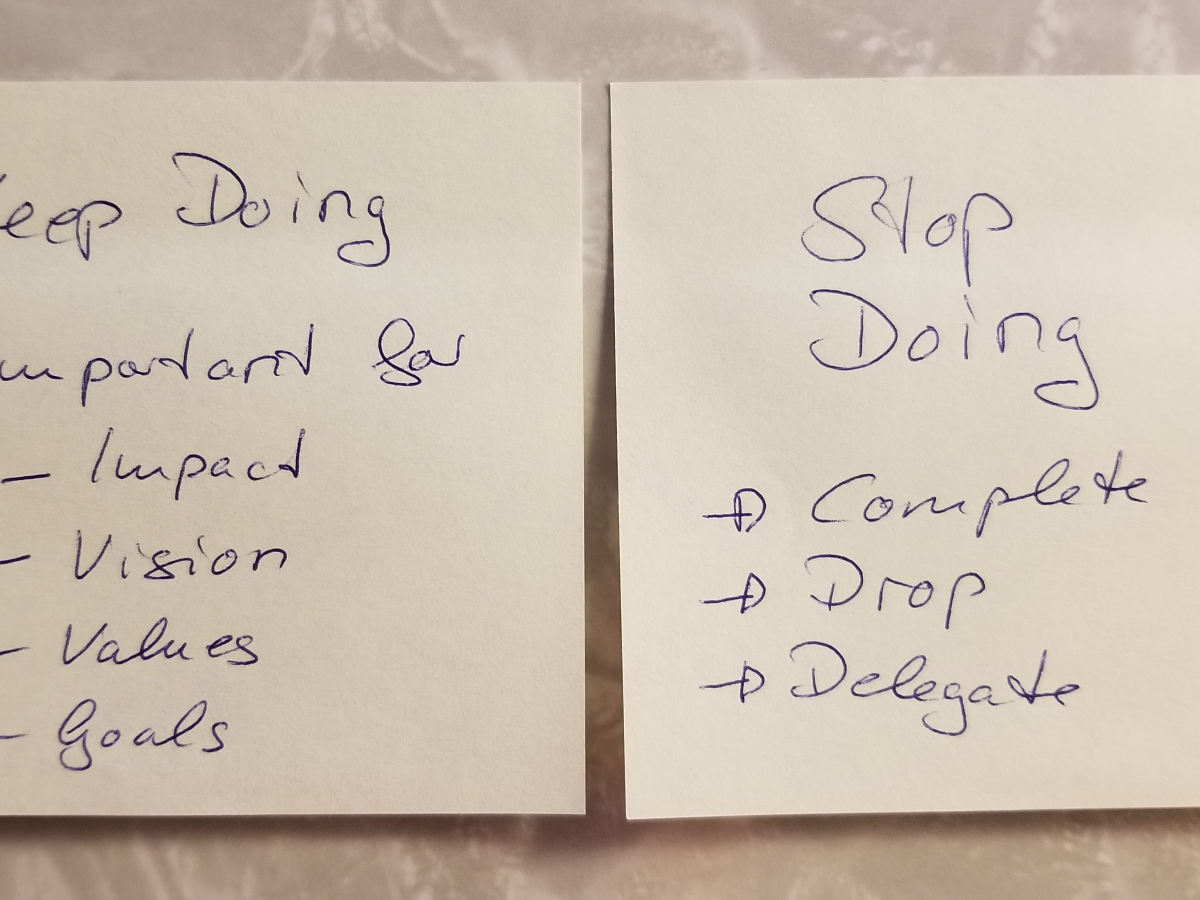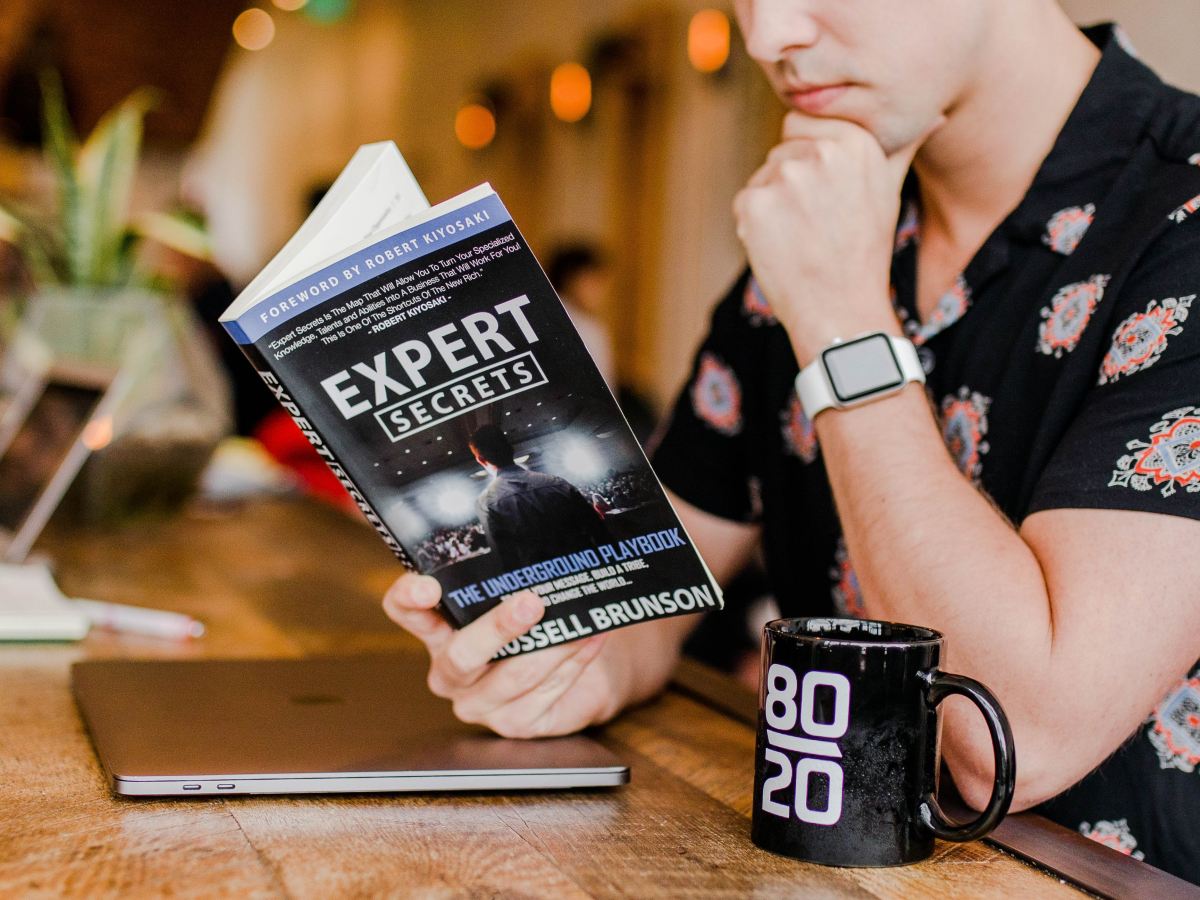Leadership starts with leading yourself. Leadership ultimately is about co-creating something with a group of people who want to shape the world around them in an agreed upon direction. The role of leaders in that space is about creating the space for collaboration, positively influencing and empowering the relationships in the space, and making sure an aligned vision for the direction and impact they want to co-create exists and is acted upon.
The challenge lies in how to do this. And this challenge starts with ourselves. If we can’t be in a positive and empowering relationship with ourselves, if we can’t figure out how to set goals for ourselves and start acting towards them, then how can we possibly authentically do this with a group of people? Leaders in organizations can obviously utilize easy hacks, such as the power and authority that comes with a title and rank in a hierarchy, but this only works to a degree in getting a team of people actually motivated, engaged and excited to follow along. It certainly won’t help with getting more people in the team to step up, take the lead on something themselves and thrive while co-creating towards a shared goal.
To make this very clear: in a truly high performing team, everyone in the team is a leader. It is a team of leaders who know how to collaborate, co-create, thrive and create great outcomes together. And yes, in most organizations they have somebody in a formal leadership role as well, but being in that formal leadership role is no prerequisite for being a leader. Neither is a title what makes an effective leader. In fact, I found that successful product people are much better leaders than many VPs or C-level people I have met in my life. Why is that? In product you have to learn how to lead with influence, you typically don’t have direct line management authority with most of your co-creators. And you have to figure out how to work effectively across all levels within, and typically also outside, your organization.
Here is what I learned along the way: To achieve great outcomes with teams even if I have no formal title, I need to consciously shift from playing in the drama triangle (victim, villain, hero) to playing in the empowerment triangle (creator, challenger, coach). First I need to lead myself there, which means I need to choose to practice this. Secondly: The clearer I can be about vision, purpose and values, the easier it is for others to co-create along with me in the same direction and in a way that does not lead to too much friction along the way. And again: I need the clarity and ability to align my actions with vision, impact and values for myself first, before I can successfully collaborate and co-lead with others in a joint space. If I don’t learn how to self-lead, I can follow along and get along with my team by relying on pleasing my peers and my manager, but I won’t be co-leading vision and direction, new strategy or new initiatives, and most likely I’ll feel as the victim of circumstance more often than as the creator of my journey.
Shifting from the drama triangle to the empowerment triangle
We all know that feeling of life just happening to us, rather than us feeling like we are in the driver’s seat. We also all know that feeling of being trapped in behaviors we’d like to change, and falling back into habits we wish we did not have (e.g. eating too much sugar, not stopping after the first glass of wine and feeling tired the next day, Netflix binges, mindless scrolling on social media, sitting on the couch rather than exercising, being triggered by the same things we thought we had already understood and shifted, etc…). What we would all love to find is: ways to feel more in control, feeling more like the master of our own choices, and to live the life we want to have (rather than what life throws at us).
What this comes down to is: how we choose to act, what we choose to pay attention to, what we choose to practice (and make habits of) and what we choose to strive for. The word choice here already points to why this is hard. We make thousands of choices per day that we don’t actually actively think about at all. They have become habits. We’ve thought these things, felt these things, acted on these things so many times already, that they happen on auto-pilot. And that is a good thing, because it saves us energy: For example, when we want to speak, we don’t need to think of learning and consciously choosing every word (like a small child). The words just spill out of us (and with them the years of acquiring language, the structure of language we learnt, the vocabulary we have access to, and the ideas we were exposed to so far). When we think of wanting to steer our life in a new direction, we need to work with the patterns and habits we already have, and/or practice and make new habits that are more fitting to the new kind of life we want.
As leaders interested in empowering our teams, we can for example ask ourselves: what are the behaviors of a coach, a creator and a challenger (the roles in the empowerment triangle). And how can we start to practice these behaviors until they become our second nature?
Habits form in a loop: First, there is a cue or trigger that starts your habit. For example: hunger is a trigger to eat. Secondly: there is a routine you engage in: you eat and finally, there is a reward: you feel full and have energy to continue your day. As leaders we are invited to ask ourselves: what kind of mindsets and behaviors would we want to see in ourselves to be more like a creator, more like a challenger and more like a coach. Next we can choose to practice those kind of mindsets and corresponding behaviors over and over until they become second nature. That way we eventually are becoming the version of ourselves we want to be. One decision and one action at a time.
When we want to choose to do something that is different from our normal habits, we have to actively disrupt an existing pattern and replace it with something new. Once we are clear with what we would like to shift, we can work with the people around us to have them help us see when we fail at this. They can help us spot and adjust unhelpful habits, which lets us practice better habits instead. Their feedback can help us get to the way we want to be much faster. Executive coaches and leadership coaches are trained in helping leaders make these shifts. But everyone around you can be made into your ally for this process, if you dare to open up, be vulnerable, be accepting of feedback and ultimately grow and change.
Leading with vision, purpose and values
Our lives are inherently something that is volatile, uncertain, complex and ambiguous. We experience that in our personal circumstances, and with the relationships we have around us. They constantly shift and change, people we love die, people marry, people divorce, our friendships shift and develop with where we are at in life and our kids develop from being entirely dependent on us to leading a life of their own. We also collectively experienced major disruptions and changes to our lives through the pandemic and in the way new technologies shape our experiences. Here in Europe, and in many other places, people experience the impact war has on our lives. With so much change and uncertainty around us, we long to find ways to anchor ourselves. We want to find that solid enough ground, from which we want to make positive decisions. And we long to find ways to be with people in a joyful and loving way despite all the challenges around us.
Part of that solid ground is becoming clear about our vision, purpose and values. This lets us have an idea of the direction we want to give our lives, the impact we want to be a part of creating, and the ways in which we want to be as we go about our goals. Once we figure out how to do this for ourselves (which is an act of self-leadership), we become much more effective at engaging in that kind of dialogue with a group of people in our teams and organizations (or our family at home).
The good news here is: there are many tools and practices we can utilize to help us get there. One of the fastest ways to figure out what impact I care about, what my life purpose might be and what my unique set of values is, is to work through a coaching process with somebody who is trained to accompany and guide me in that self-discovery process. Nobody can tell you from outside exactly what your vision, purpose or values are. But every single one of my clients was able to figure this out with the help of some structured conversations. This is not a quick fix of one or two session and being done. For me, this was a process that unfolded over a period of time and something I adjusted to and grew into over time. There have been great coaches in my life who helped me develop myself as a person and leader. I’m super grateful for the kind compassion they have in sitting with me, while I gain insights into my inner world.
This self-discovery happened in two tracks simultaneously in my life: In dance with learning to lead in tango. And in my professional life, in learning to lead in product and business roles with the help of mentors, coaches and lots of self study and experimentation. After many years of engaging in both of these worlds, I see how leading in both contexts is ultimately about all the same things. If you have any kind of practice with partner dance, partner yoga, martial arts, soccer or other team sport, chances are, you learnt a ton about what gets the dance to flow, or the team to reach a state of effortless flow and success together.
Here are some practices that can be immensely helpful for developing yourself as a leader:
- Anything that gets you to understand yourself better: e.g. journaling or meditating
- Anything that allows you to understand your emotions and create a space between a trigger and your next action (in that space you get to choose the shift from unhelpful habit to helpful action): e.g. learn how to label emotions, learn how to feel them in your body and process them safely: coaching is a great vehicle there, so is meditating or a practice of yoga Nidra. Or obviously therapy, if there are major traumatic experiences to process.
- Anything that lets you include your body holistically in decisions and actions. For example: partner dancing, training yourself in active listening, training yourself in getting to know and trust your intuition, working with a coach that uses embodiment techniques, a martial arts practice, or reflecting on what you can learn from joint pleasure in sexuality. Your body is always with you in all contexts of your life, it is an amazing instrument to learn how to work with in leadership, and your best ally in figuring out what brings you joy in the company of others.
In summary: authentic and effective leadership works from the inside out AND in relationship with other people. Anything you can learn about self-leadership, can enable you to become a more effective leader in any kind of group. This is an exploration best started with lots of compassion with yourself, with lots of curiosity and with knowing that a much more fulfilling and joyful life can be had, when we are growing our (self-) leadership skills.
Coaches are there to accompany you on this journey. They are good to have by your side because your inner critic voices and saboteur behaviors will show up, and try to keep you in place, when you start walking into new territory. Take it as a sign of being on the right path, when they start showing their face. When that happens, it’s good – and honestly more fun – to have encouragement and support along your path as you step into the life you truly want to live. Pair with your peers, your good friends and/or with a coach along the way. They’ll help you stay the course and keep you accountable to stay focused on your vision and values along the way. We are stronger together as humans.
Photo by Vlad Bagacian on Unsplash
___________________________
If you would like to explore this more: reach out for a free discovery session with me.
I coach, speak, do workshops and blog about #leadership, #product leadership, #innovation, the #importance of creating a culture of belonging and how to succeed with your #hybrid or #remote teams.
Get my latest blog posts delivered directly to your inbox.
Your email address will only be used for receiving emails with my latest blog posts in them. You can unsubscribe at any point in time.
If you enjoyed reading this post, you may enjoy the following posts as well:
Product Strategy without clear Business Strategy
This post is for you, if you find yourself in an organization that lacks a clear business strategy. Something I can relate to from many years of working with these kinds of organizations. It’s also for you if you just want to reflect and think about how to improve your current strategy with a few…
Mastering Focus: Strategies for busy Product Leaders
Do you know that feeling of dissatisfaction with your day because you feel like you made no meaningful progress? That too many distractions got in the way of you focusing on deep work today. You may also know this vague feeling of failing because direction, strategy and what to prioritize are not crystal clear for…
Evolving as a Product Leader: Skills and Strategies
We would all love it, if we could simply be great at product, or at leadership, or at public speaking, or an expert on AI, or great at discovering and phrasing vision and strategy or super focused or finally find a healthy work-life balance. We admire those people who have mastered a skill we’d like…
The Power of Completion
We each have only a few hours of time to be productive with work each day. Managing our time wisely, being intentional about what we give priority (and what we decide not to do) is a key skill in product work and in life. When I was working in product roles, it always felt like…
Why inclusivity matters
Looking at the world today one thing is clear to me: violence does not nurture peace. And the only way to come together as a human family is to patiently do the work of building inclusive spaces. Spaces that allow all of us to exist, that come with fair access to opportunities, that make us…
The art of persuasion
Persuasion is about influence. It is a super useful skill to invite your team to co-create with you. So often in product roles, this is exactly what we could use more of. Persuasion skills could help you to be able to agree on a strategy, or to get to alignment on our OKRs or the…







One thought on “The art of self-leadership”